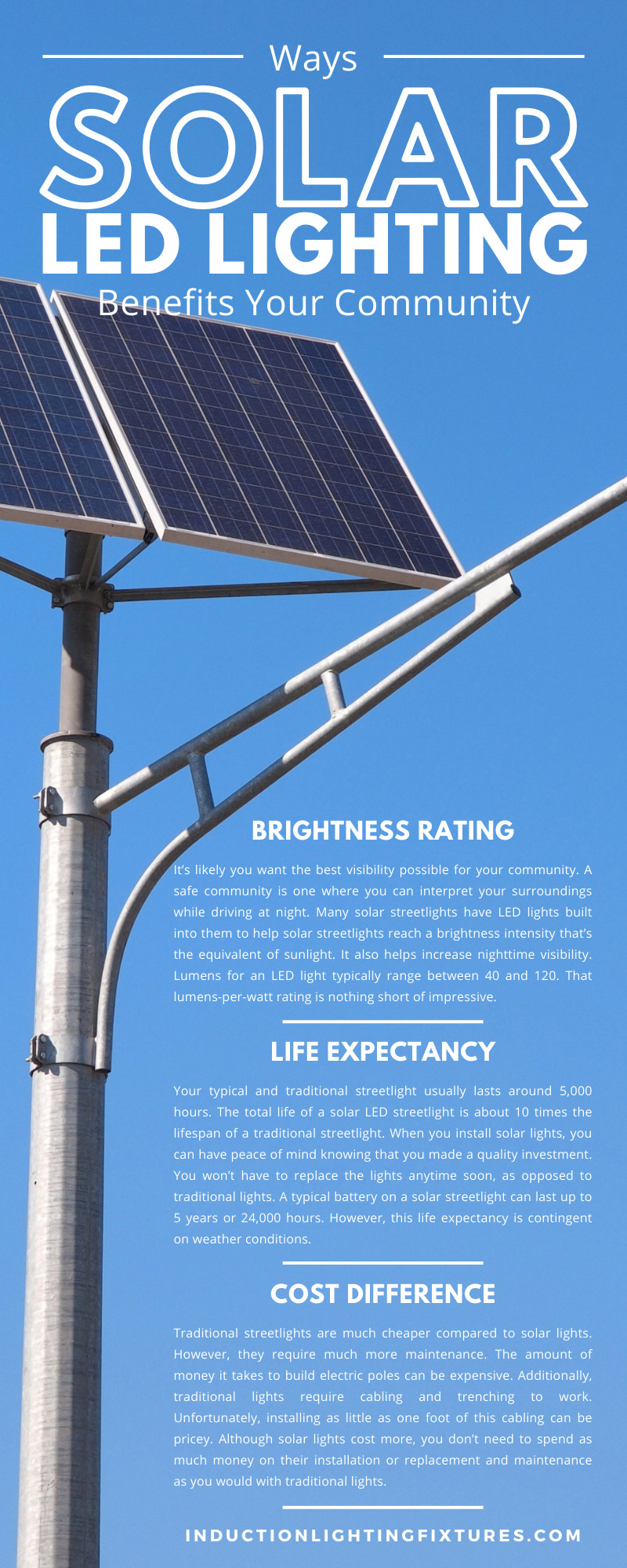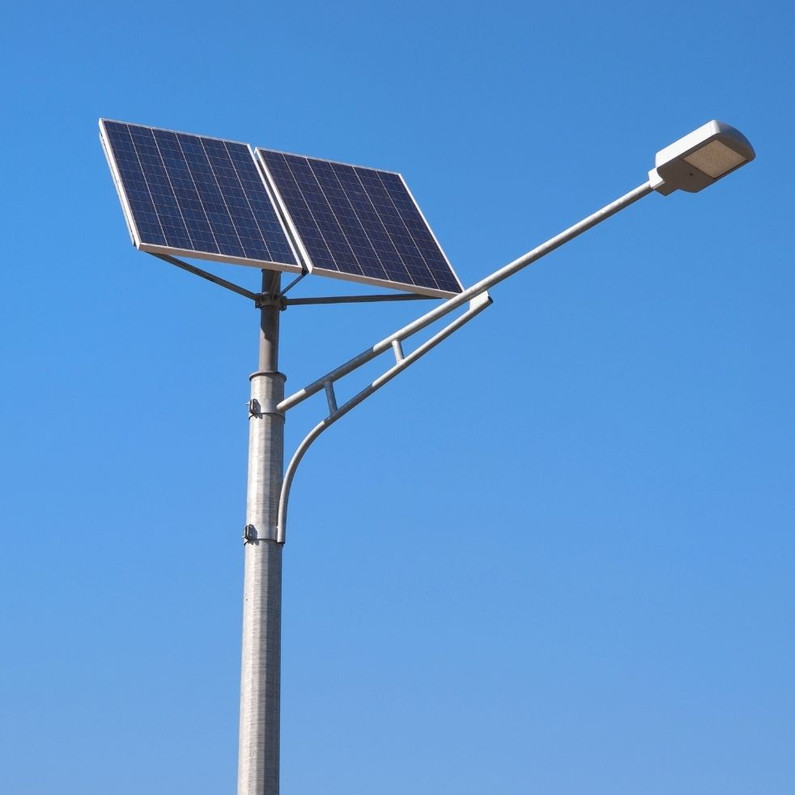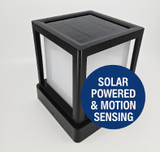Ways Solar LED Lighting Benefits Your Community
Solar lights can have a large influence on your community, and modern solar streetlights are the leading lights of today’s world. But what makes this solar light climb to the top of its market, and why should your community have them? Read more about ways solar LED lighting benefits your community.
Brightness Rating
It’s likely you want the best visibility possible for your community. A safe community is one where you can interpret your surroundings while driving at night. Many solar streetlights have LED lights built into them to help solar streetlights reach a brightness intensity that’s the equivalent of sunlight. It also helps increase nighttime visibility. Lumens for an LED light typically range between 40 and 120. That lumens-per-watt rating is nothing short of impressive.
With a 180-degree light spread, LED lights highly increase visibility. Their CRI is 70 to 80, with a color temperature ranging from 2700k to 6500k. In contrast, traditional streetlights have metal halide lamps, which don’t compare to the visibility and brightness rating that LED lights can offer. Their CRI is from 20 to 80 with 1900k and 2800k color temperatures. Additionally, their color looks more orange. This can make it difficult to distinguish between the colors and tints of your surroundings. The human eye has a hard time depicting information it sees with these logistics.
Therefore, people will be safer when they can see the light more clearly. Not only do LEDs help the environment, but they also provide the streets with more light.
Life Expectancy
Your typical and traditional streetlight usually lasts around 5,000 hours. The total life of a solar LED streetlight is about 10 times the lifespan of a traditional streetlight. When you install solar lights, you can have peace of mind knowing that you made a quality investment. You won’t have to replace the lights anytime soon, as opposed to traditional lights. A typical battery on a solar streetlight can last up to 5 years or 24,000 hours. However, this life expectancy is contingent on weather conditions.
If weather conditions are tough, these batteries or lights may need a replacement more often than five years. Although these lights are extremely durable due to their glass housing and filament, weather can still impact them.
Additionally, you must consider the labor costs for these replacements. Solar retrofit is an ongoing improvement in the current market. In the meantime, an investment in solar LED lighting will still save your community time and money in the long run.
Cost Difference
Traditional streetlights are much cheaper compared to solar lights. However, they require much more maintenance. The amount of money it takes to build electric poles can be expensive. Additionally, traditional lights require cabling and trenching to work. Unfortunately, installing as little as one foot of this cabling can be pricey. Although solar lights cost more, you don’t need to spend as much money on their installation or replacement and maintenance as you would with traditional lights. Also, their glass housing resists impact and shock, making them durable. Now, let’s take an even deeper look into costs.
For a traditional streetlight, it’s $120 for 668 lights and around $980 for just one power distribution unit. The total price for these traditional lights installed, including labor costs, would be around $270,000. On the other hand, solar LED lights would cost $330 for 668 lights and $0 for a power distribution unit. Including labor costs, it would be around $327,320 to install over 600 lights. This is significantly more than traditional lights. However, the benefits far outweigh the cons. You would make this money back from solar LED lights in the long run.
Influence on the Environment
Commercial solar-powered streetlights have a bigger impact on the environment than some may know. Solar streetlights have essentially no negative impact on the environment. This means that they don’t radiate any kind of gases that could potentially harm our environment. When you compare this to solar’s competitor, the traditional streetlight, you’ll see some major differences. Traditional streetlights, also known as high-pressure sodium lights, use non-replenishable sources to power their electricity.
Over time, these sources create carbon dioxide as a by-product. Carbon dioxide contributes to the destruction of our climate, which absorbs gas and radiates heat. The Earth traps this heat, warming the land and our oceans. Something as simple as traditional streetlights contributes to the climate change crisis. Luckily, solar streetlights are the change that we need for the future. Every little decision makes a big impact on the Earth. Let your community play a part in this important impact on our environment.
Reliability
If power cuts or there is a grid failure, traditional lights are in trouble. They depend on this power to function properly. Traditional lights are not as reliable, to put it simply. On the other hand, solar-driven streetlights will stay illuminated despite a power cut or grid failure. Therefore, you know that they’ll do their job even if power cuts out.
This makes solar streetlights an option that you can rely on. You don’t connect these streetlights to the electrical grid infrastructure since their photovoltaic modules, or solar panels, use sunlight in the daytime and convert it into energy. These panels store energy throughout the day and distribute the power for the LEDs at night. Homes and businesses in your community will thank you when lights still work if there is a grid failure.
It’s important to understand the differences between traditional and solar streetlights and the ways solar LED lighting benefits your community. These lights have an impact on our environment that you shouldn’t take lightly. Additionally, brightness range and cost differences may influence your streetlight decision.
Although traditional lights are cheaper up-front, they don’t last as long and will require frequent maintenance and labor. Rather, the life expectancy and reliability of solar streetlights should impact your decision. Solar streetlights are changing communities slowly with their impressive dependability. Choose to impact your community, Earth, and wallet by investing in a streetlight that benefits these three the most.

Recent Posts
-
How Long Will Solar Powered Lighting Operate in the Rain?
How Solar Light Fixtures Can Run for 10 Rainy Days If you’ve ever wondered how a Commercial solar li …Jul 30th 2025 -
Spotlight - The IL-SPG54 Smart Solar Walkway Light: Where Performance Meets Simplicity
Introducing the IL-SPG54 Smart Solar Walkway Light: Where Performance Meets Simplicity When it comes …Jun 16th 2025 -
Corn Bulb Sale - While supplies last!
⚡ Limited Time Sale – BLE Series Corn Lamps Starting at $24.99! Stock up now while supplies last – p …Jun 11th 2025






